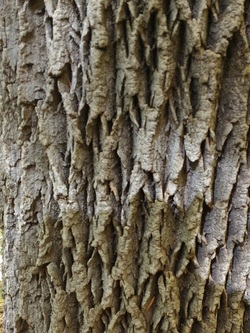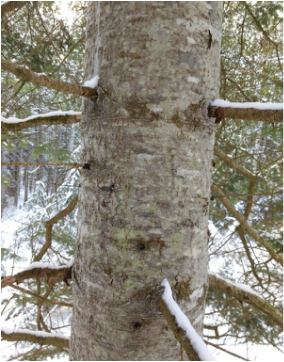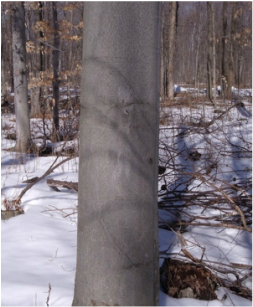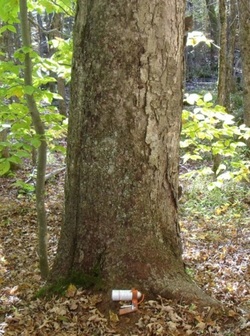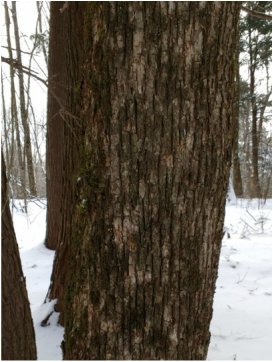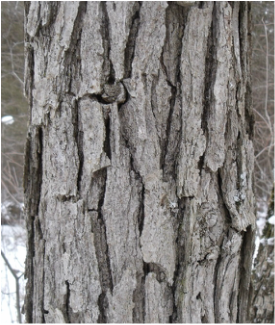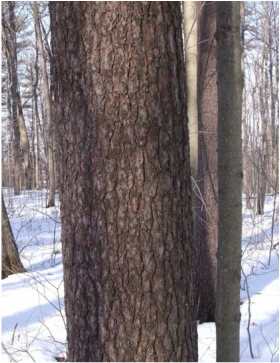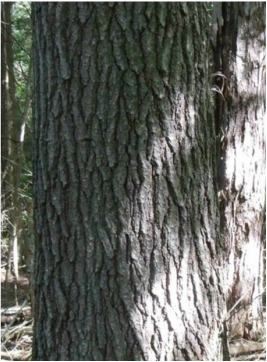Smooth gray bark with mottling, frequently found with resin pockets
|
The bark of a tree is what we can all see readily as leaves, needles and buds are usually above eyesight. All trees have distinguishing characteristics but can be similar at times. Wet bark looks different compared to dry. Look for leaves on the ground to confirm. Some species like red spruce can be difficult to identify, fortunately red spruce is found in the Denbigh area and east.
The tree to the left is beech with beech bark disease that breaks up the smooth grey appearance. |
Green AshFound associated with heavier soils, flat topped ridges with elongated diamonds between ridges, not as pointy as white
|
White AshPointed ridges with diamond shape in between ridge. Not as soft as basswood
|
White AshMature bark loses it's pointy ridges but will still have evidence of diamond shape.
|
BeechThe american beech has been under attack from beech bark disease for over 20 years in the local area. The photo above clearly indicates signs of advanced BBD. White fuzzy dots precede the red dots in loose circles.
|
White BirchWhite peeling bark, saplings have bronze look under peel. Bark peels horizontally.
|
White BirchMature bark loses glossy white, infrequent over 46 cm in diameter
|
Yellow BirchYellow golden in colour, bark peel much thinner than white birch. Peels in little shreds
|
Yellow BirchMature bark loses golden colour, look carefully, can be confused with hard maple when old
|
ButternutFlat topped ridges with canoe shaped sections between ridges. Often with black sooty seepages
|
Red CedarSimilar to white cedar, likes to hang on to lower branches, older stems bole looks corrugated
|
White CedarThin strips not completely vertical. Often associated with water, can be found on upland sites
|
Black CherryBurnt corn flake bark, often found with resin seeping from cracks in the greater Quinte area
|
Silver MapleFound in wetter area, light coloured bark, irregular strips less dense than hard maple
|
Soft MapleBetter quality red maple (soft maple), thin outer bark, look for reddish underbark
|
Burr OakBlocky light coloured bark, irregular pattern, frequent small twig scars, capable of growing 350 years plus
|
Red OakCoarse heavy bark, orangish sections between raised sections, can look purplish
|
Pitch PineRare in south central Ontario, found a natural stand north of Marmora, similar to red pine, needles thinner
|
Red PineFlaky bark, red when mature, separates into large sections, Scots pine are orange in appearance.
|


